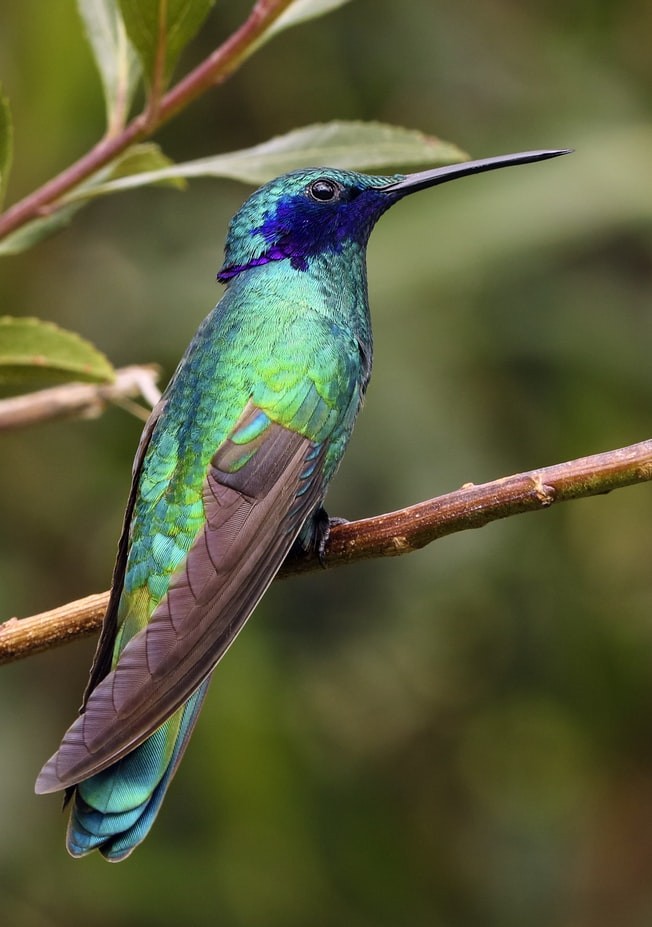Hummingbirds are known for being one of the smallest species of birds in the world. They are also known to be among the brightly-colored creatures in the entire planet and this is mostly because of their iridescent feathers meaning, light bounces from the feathers and produces shimmering hues that change shades depending on the viewpoint. Although having brightly-colored feathers are generally a bird's characteristic, hummingbirds always stand out and for a long time ornithologists were not sure of the explanation behind it.
READ: New Species of Ancient Bird Found in Japan
However, a recent study by the Field Museum in Chicago shows that the secret lies in the shape of structures in their feathers that enables the reflection of light. According to the paper's first author and a postdoctoral researcher at the Field Museum Chad Eliason, why the hummingbirds are more colorful than its fellow birds is a question that has been bogging their minds for so long. "Why are hummingbirds colorful? Is it the environment? Or is it something about the internal mechanisms, the physics, and the way colors are produced?" He said.
To find answers to his question, Eliason and international team of scientists conducted what is considered the largest optical study of hummingbird feathers. The team was able to observe and analyze the feathers of 35 species of hummingbirds using transmission electron microscopes and then compared them with the feathers of other species of birds with bright colors as well.
UNDERSTANDING FEATHERS
In understanding the morphology of birds, one must understand the feathers. Feathers are a unique characteristic to birds and their dinosaur ancestors and are important in insulation, thermoregulation, and flight. The birds' feathers are made up of keratin -- the material that comprises the mammalian hair and nails -- and they are arranged like trees complete with parts resembling the trunk, branches, and leaves. The leaf-like structures are the barbules, these are the cells that contain melanosomes or the pigment-containing organelles. The melanosomes and its shape and arrangement can influence how light bounces off the feather, eventually producing bright colors. Co-author Matthew Shawkey from the University of Ghent in Belgium explains that they call the iridescent color produced as structural colors because they depend on the structural dimensions. "A good analogy would be like a soap bubble." He narrates. "If you just look at a little bit of soap, it's colorless. But if you structure it the right way, spread it out thinly to form the bubble, you'll get the shimmering rainbow colors around the edges."
The scientists explained that the same phenomenon is observed with the hummingbird's melanosomes: with the correct structure, something colorless can be turned into something colorful. Unfortunately for mammals like humans, melanin is not organized in a fancy way inside the hair. But in birds, layers of these melanosomes are present and when light bounces off them, it produces bright colors.
Hummingbird melanosomes are considered special even among birds. For instance, in ducks, their melanosomes are log-shaped and contain no air inside. The hummingbird's melanosomes are pancake-shaped that contain a lot of tiny air bubbles. Because of this flattened shape and the presence of tiny air bubbles, the hummingbird melanosomes are able to create a more complex set of surfaces that when light hits it, it produces iridescence. In this study, the scientists were also able to find out that these traits that made the hummingbird stand out are traits that evolved separately which made the hummingbird such an interesting creature.















